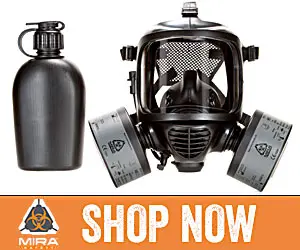
A Guide To Water Treatment In The Backcountry
Why all the fuss about water treatment outdoors? The answer is that there’s no easy way to tell whether or not that pristine-looking stream a few hundred yards away from your camp is harboring a gut-seeking microbe. If any animal, including humans, can reach an area, so can disease-causing microorganisms.
You might find people who claim they’ve been happily drinking untreated backcountry water for years. Beyond mere good fortune, it’s possible they have especially robust immune systems. Such symptom-free people can, of course, still carry their microbiological secret with them to each and every new campsite.
The best practice is to treat water from any source, which is what most savvy outdoor visitors do. This article offers an overview and tips on outdoor water treatment. To learn about options for travel abroad, read Water Treatment for International Travel.
Primary Types of Waterborne Threats
Any water source on Earth could contain microscopic pathogens, a fluvial zoo spawned when that source became contaminated with human or animal feces. Ingesting as few as 10 disease-causing microorganisms is enough to produce diarrhea and other dehydration-inducing symptoms.
Pathogens, some of which can survive for months outdoors, fall within three primary types:
Protozoa include Cryptosporidium parvum and Giardia lamblia. These have a hard outer cyst that protects them against certain chemicals. Their relatively large size, though, makes them easier to filter out of water.
Bacteria include Escherichia coli (E. coli), Salmonella, Campylobacter and many others. These midsize microorganisms can also be removed by water filters.
Viruses include Hepatitis A, rotavirus, and norovirus. Because they are smaller than protozoa and bacteria, they are difficult to filter out of water. Technically speaking, treating water by removing or neutralizing them is when you’re “purifying” water.
For a detailed look at your treatment options for all of these pathogens, read How to Choose a Filter or Purifier.
Tip: Always carry a backup treatment system. A filter can be lost; batteries can drain; a device can get broken. Chemicals offer extra security with negligible weight. Boiling is a surefire backup option: Bring water to a rolling boil for 1 minute, or for 3 minutes if you’re above 6,500 feet.
Where to Gather Water

What to look for in a water source:
- Flowing water, especially in a stream or river. This is a good option because it isn’t conducive to the growth of algae or the accumulation of microorganisms. A bonus is that mosquitoes don’t lay eggs in fast-flowing water.
- If no clear flowing source is available, then look for calm water (a lake, a pool, a slow-moving stream) without a lot of sediment or silt. Clearer water passes through a filter more swiftly and reduces the chance of clogging.
- A location that allows you to reach well away from the shore, where microorganisms tend to accumulate in higher concentrations.
Tip: After a heavy rain, wait before gathering water for treatment.When streams are on the rise, rain has washed surface material into them, as well as lakes and other water sources. This increases bacterial loads and muddies up gathered water.
Danger signs in a water source:
The following tipoffs suggest a much greater likelihood of contamination. If you can choose another water source, do so. If not, then follow water treatment directions for your product carefully.
- Water (particularly at lower elevations) near meadows or pastures where animals have grazed or near popular, established campsites.
- Evidence of pack animal traffic or other domesticated animal activity.
- Signs of sloppy human behavior or a prolonged human visit.
- Excessive amounts of foam or brown scum, which can indicate algae blooms; though algae itself is rarely harmful, it indicates a nutrient-rich environment for microorganisms to grow.
- Dirty snow, which indicates human visitors and impacts; also, don’t assume that even clean-looking snow is “safe” because bacteria can live for months in ice.
How to Gather Water

The most important thing when you gather water for treatment is to seek out the clearest possible water. Leaves, algae and silt don’t pose a threat, but they do complicate the process of treating water when they’re present. If murky or silty water is unavoidable, consider these strategies:
- Gather from the surface: Use the pot in your cookset and scoop water from near the surface of the least murky section of water you can locate. Let the pot sit so sediment sinks to the bottom. Take care not to disturb the sediment as you treat this now clearer water.
- Use a prefilter. If you’re using a filter, its intake hose likely has one on the end. It keeps larger debris from clogging the internal filter element. Prefilters are even more essential for UV-treatment options, and are often sold as an accessory item. No prefilter? Strain water through a bandanna before treating.
Many illnesses attributed to bad water are actually caused by poor hygiene, so keep your hands clean. Pack hand sanitizer and use it often—each and every time you answer Nature’s call. It’s also good practice to sanitize before food prep, before water duty and after your hands have been in contact with a natural water source.
Leave No Trace Practices
Good practices are required to keep water sources pristine. As more and more of us visit wild places, we need to rededicate ourselves to Leave No Trace principles. Below are some of the key principles related to preserving the quality of backcountry water:
- Camp at least 200 feet away from water sources.
- Properly dispose of human waste at least 200 feet away from water sources.
- Carry water for cleaning at least 200 feet away from water sources.
- Never use or toss soapy water directly into backcountry water sources. It can help spawn a population of microscopic pathogens in the water.
- Dispose of soapy water by dispersing it on soil rather than rocks.Soil microorganisms help metabolize the pollutants.
Contributing experts: Camping and Hiking Sales Manager Tim Bird (REI Knoxville, Tenn.), who has treated backcountry water along the full length of the Appalachian Trail.















